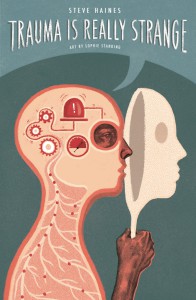Here at Singing Dragon, we’ve asked Assistant Editor, Jane Evans if she wouldn’t mind us jumping into her shoes for a day. Luckily, she agreed, and below is the result: a day in the life of an Assistant Editor at Singing Dragon, by Jane Evans. We hope you enjoy it! Next, we’ll be jumping into the shoes of Production Designer, Emma Carroll, so keep a look out!
Jane Evans, 16th October 2015
Many of my friends and family are under the impression that being an Assistant Editor means I get to sit around reading all day. While that (unfortunately!) isn’t the case, the reality can be just as much fun – quickly getting my head around a new topic to write attention-grabbing blurbs, searching for potential cover artwork, or helping an Editor brainstorm title ideas.

I get into the office at 9.30am and, with an obligatory cup of tea in hand, start reading emails received overnight. I respond to anything urgent immediately and flag others to reply to later in the day. Handling priorities is the key to your survival as an assistant, and I usually have at least two to-do lists on the go – one for long-terms tasks and another for that day’s particular priorities.

We are currently preparing for a sales conference in December, so I am in the midst of working with the rest of the assistant team to draft AI (Advance Information) sheets for all of our Spring and Summer 2016 titles. This includes writing blurbs, highlighting key sales points and ensuring our author biographies are up to date. For me, it is one of the best parts of the job and a chance to be creative, especially with our children’s books. I recently had great fun writing the blurb for Michael Chissick and Sarah Peacock’s Seahorse’s Magical Sun Sequences, which teaches yoga to children of all abilities and features an octopus on crutches and a starfish with a bad back!

 Singing Dragon is constantly evolving and growing in new directions and I love working on our new list of comics. As I write, I am eagerly awaiting the final files for Steve Haines and Sophie Standing’s Trauma is Really Strange, which follows the success of Pain is Really Strange and promises to be just as informative, witty and beautifully illustrated. Once the files arrive, I will help with the handover to our production department. This process varies from book to book, but includes meticulous checking of our database records against the final manuscript and applying for permission to use any copyright material taken from other sources.
Singing Dragon is constantly evolving and growing in new directions and I love working on our new list of comics. As I write, I am eagerly awaiting the final files for Steve Haines and Sophie Standing’s Trauma is Really Strange, which follows the success of Pain is Really Strange and promises to be just as informative, witty and beautifully illustrated. Once the files arrive, I will help with the handover to our production department. This process varies from book to book, but includes meticulous checking of our database records against the final manuscript and applying for permission to use any copyright material taken from other sources.
I attend a number of weekly meetings, including our Covers and Titles  meeting. This is an opportunity for the Editors to discuss any potential changes to a book’s title and present draft cover designs for feedback from our Sales and Marketing teams. We consider everything from whether the design is appropriate for the market through to whether the title will be legible when the cover appears as a thumbnail image online. Some of our covers go through several rounds of draft designs until they are perfected, whereas others get it right first time. Damo Mitchell’s White Moon on the Mountain Peak, a comprehensive explanation of Daoist internal alchemy for Western practitioners, was one such cover. It is atmospheric and resonates with both the title and the book’s content perfectly. We all loved it immediately.
meeting. This is an opportunity for the Editors to discuss any potential changes to a book’s title and present draft cover designs for feedback from our Sales and Marketing teams. We consider everything from whether the design is appropriate for the market through to whether the title will be legible when the cover appears as a thumbnail image online. Some of our covers go through several rounds of draft designs until they are perfected, whereas others get it right first time. Damo Mitchell’s White Moon on the Mountain Peak, a comprehensive explanation of Daoist internal alchemy for Western practitioners, was one such cover. It is atmospheric and resonates with both the title and the book’s content perfectly. We all loved it immediately.
Finally, I have recently started to acquire my own titles so whenever I have a free moment in the day, I read and comment on new proposals. It is always exciting to have a rummage through our submissions pile to see what hidden gems I can find! If you are interested in submitting a proposal to us, you can do so here.
My day usually ends by writing a to-do list for the next morning to give me focus as soon as I get into the office. However, after two and a half years at Singing Dragon and JKP, I have learnt that I can never really know what the next day will have in store!
 As both
As both 








